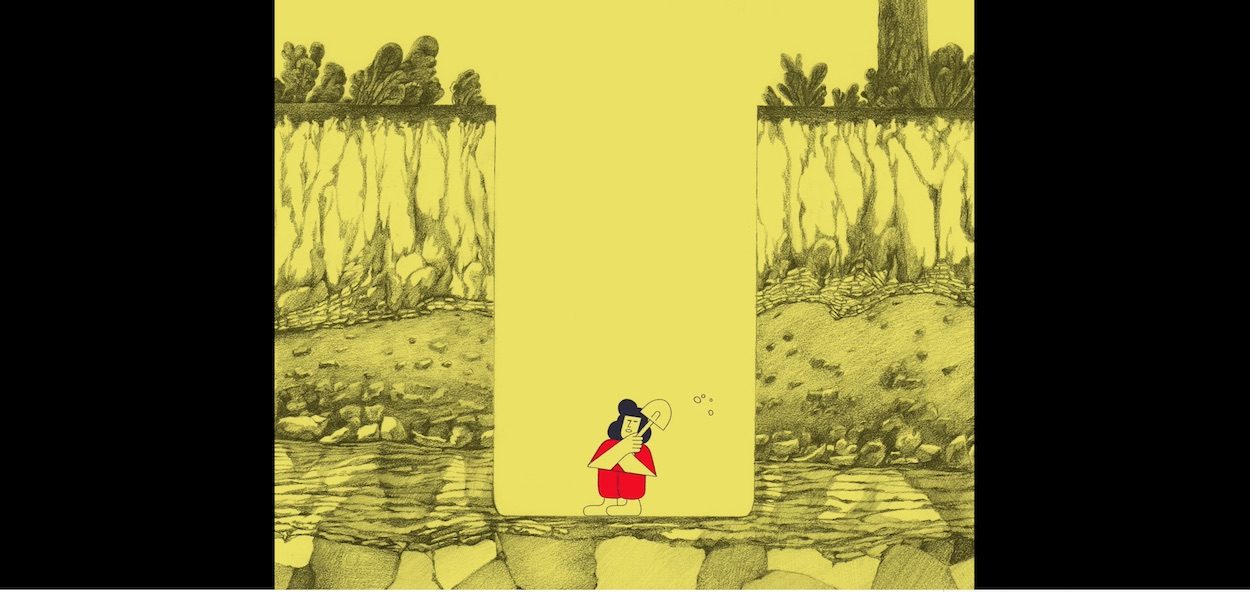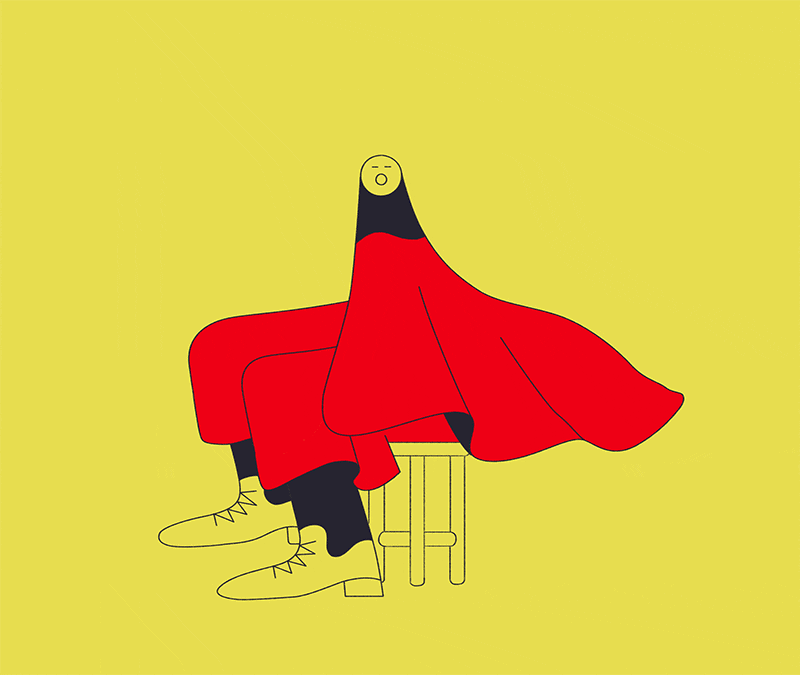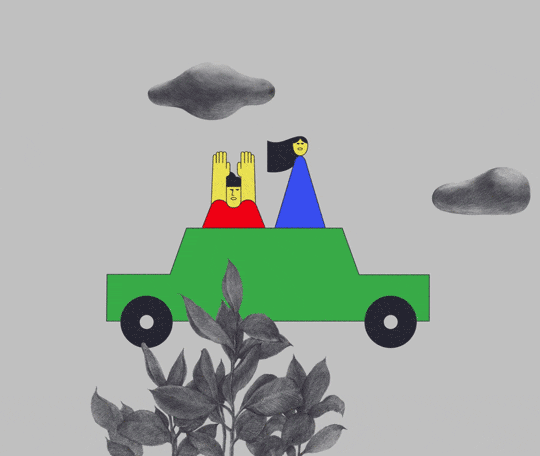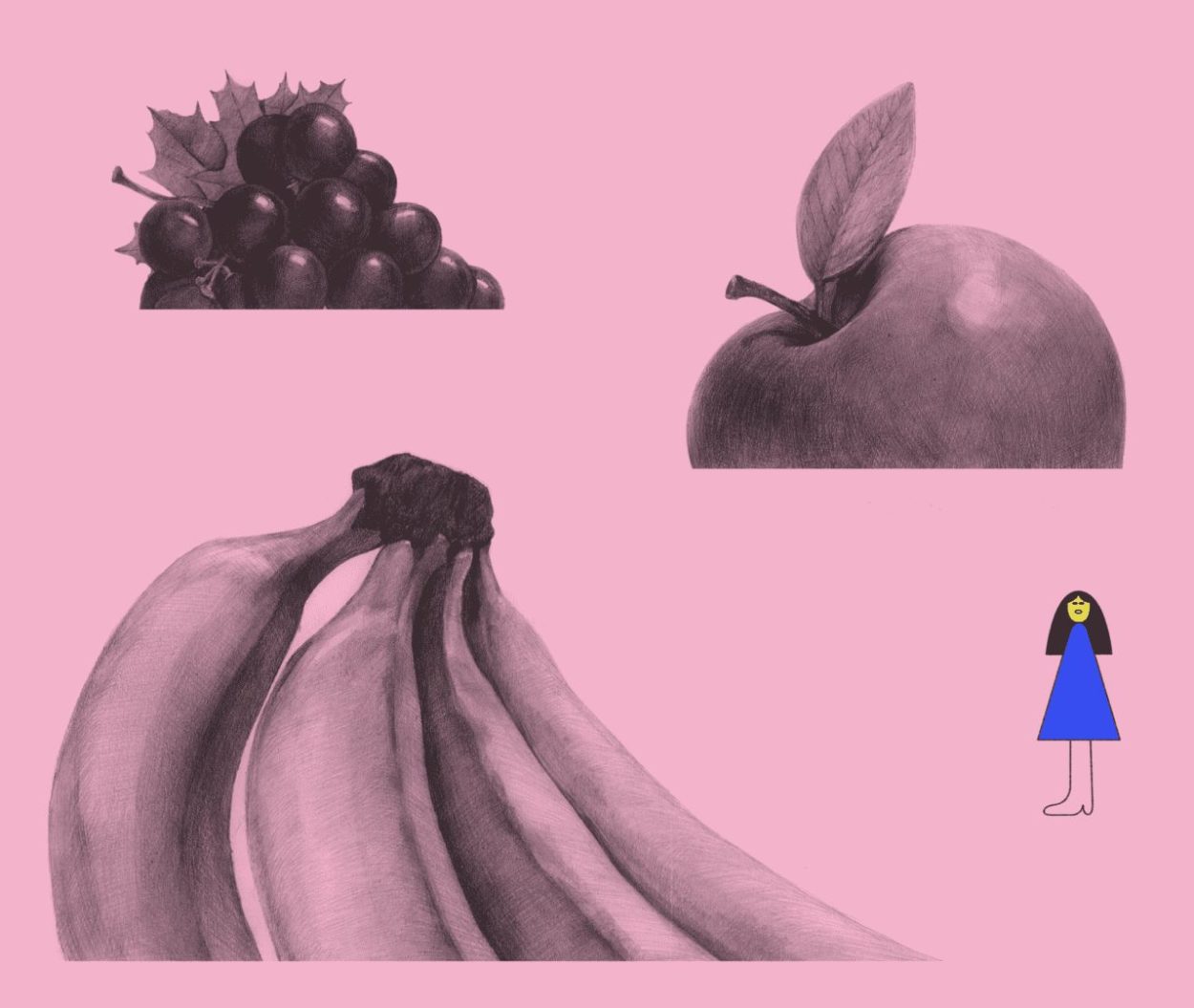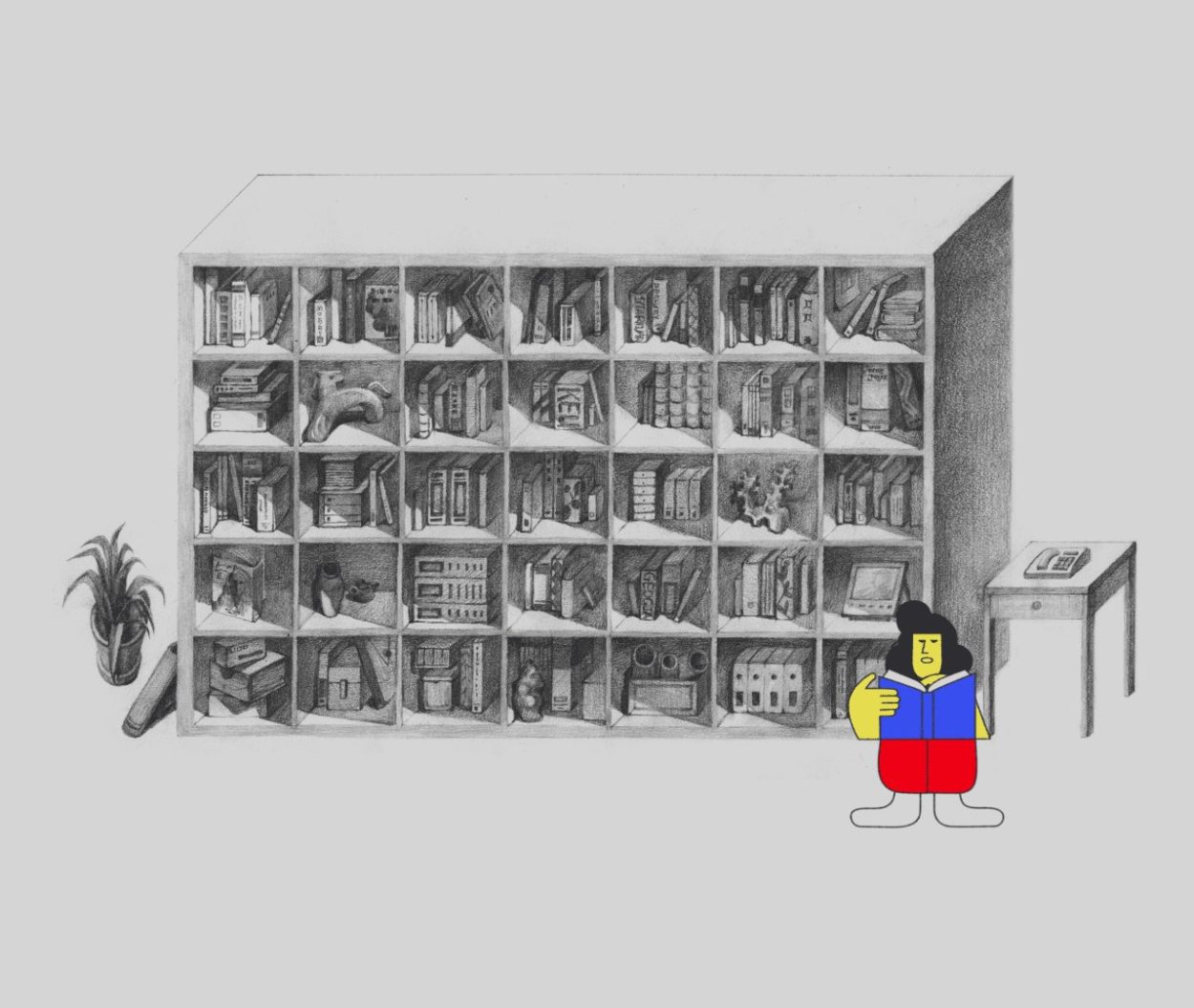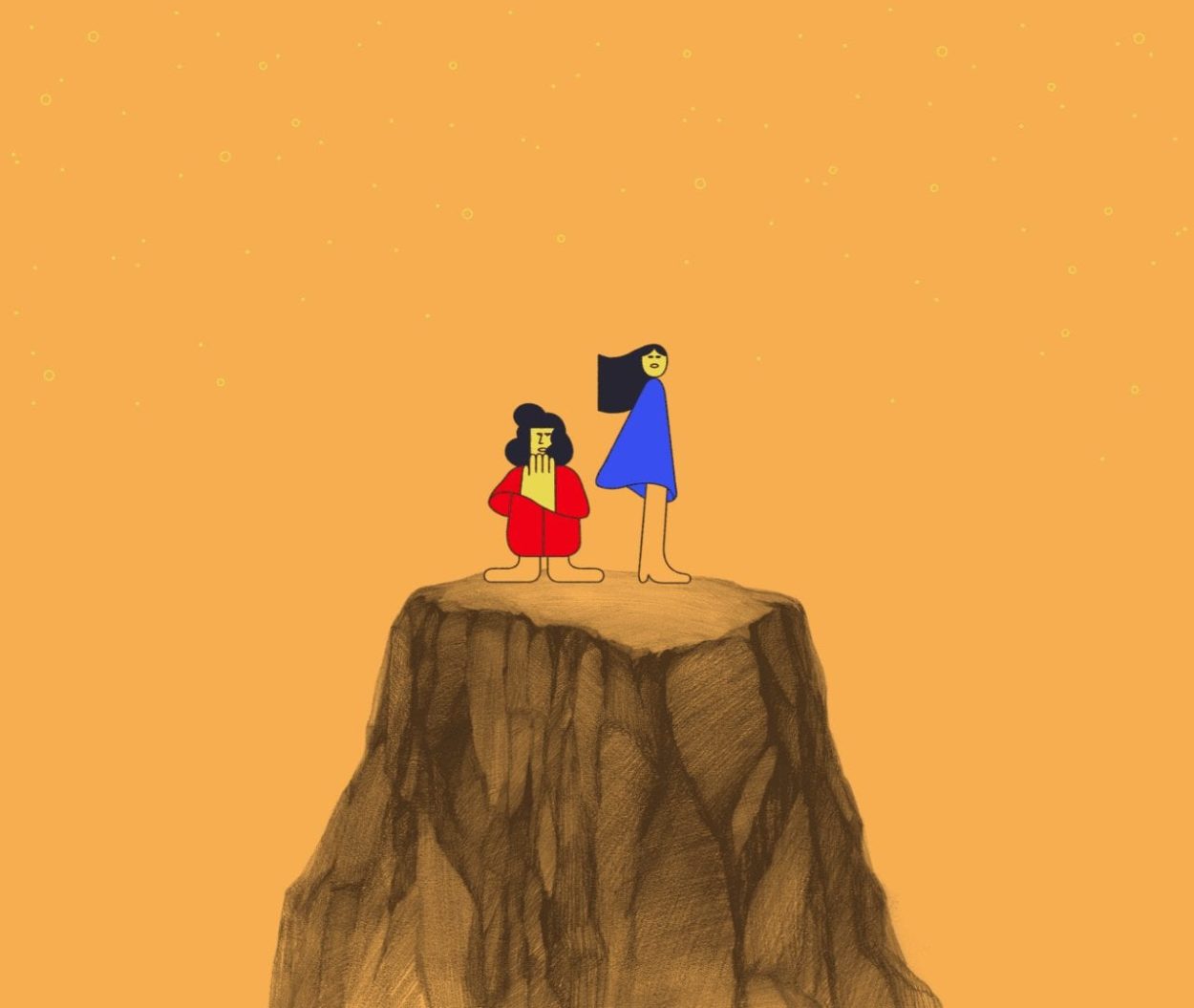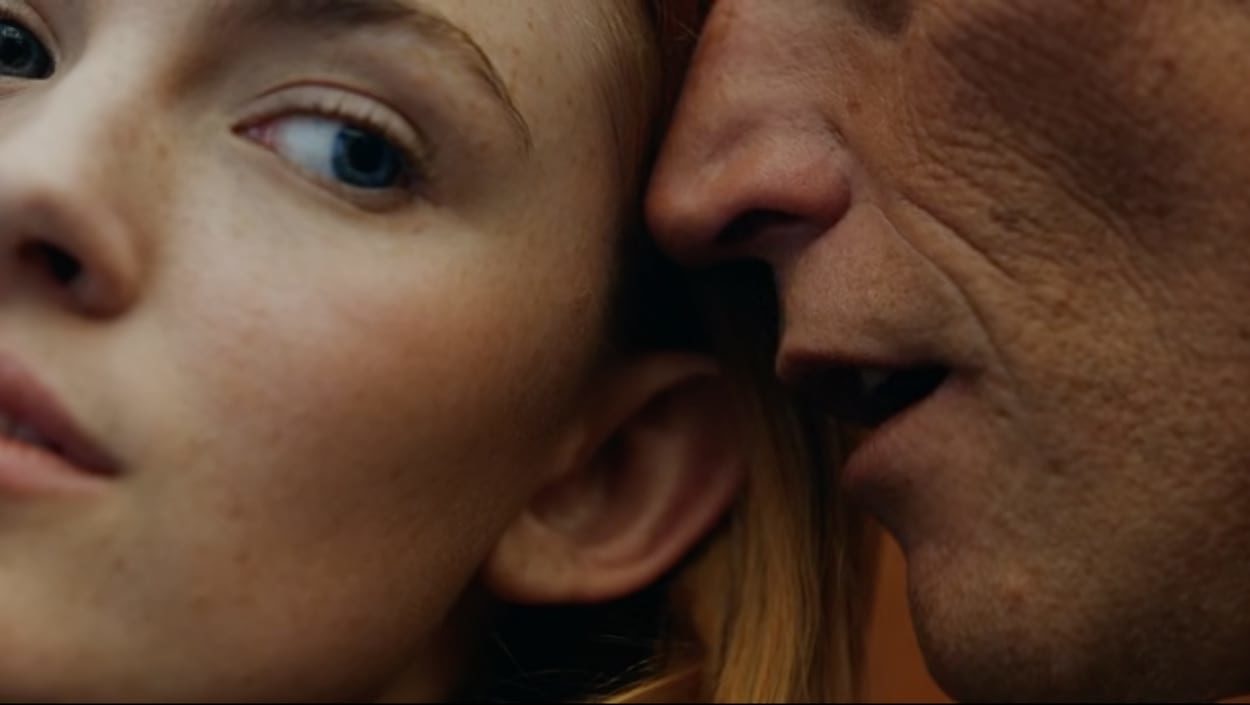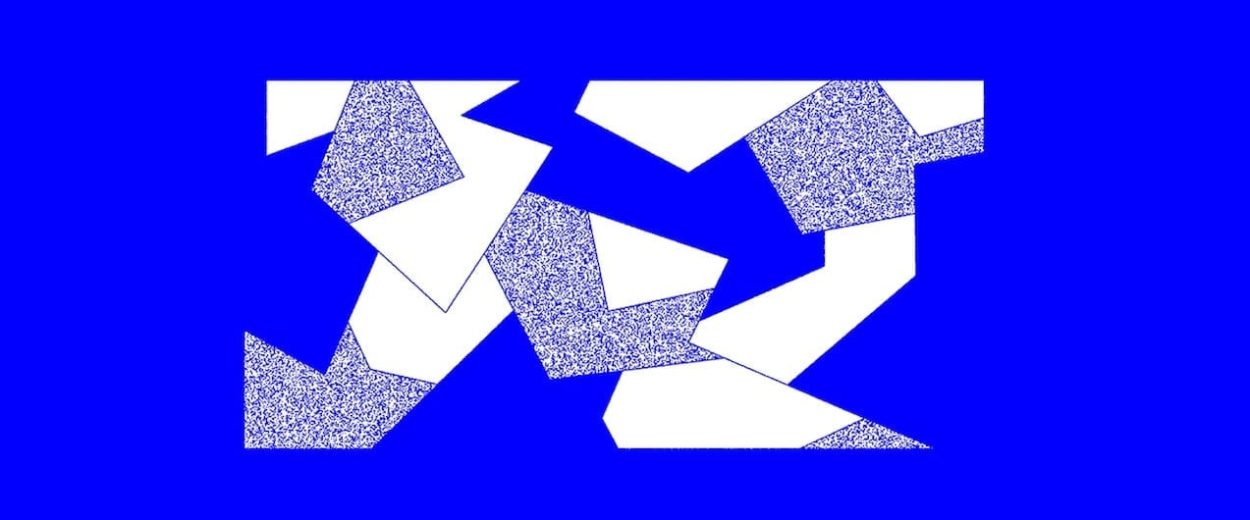You wrote, designed and directed Wednesday With Goddard. Please tell us about your creative process starting with how the narrative came about – the script is so warmly effective.
I initially wrote Wednesday with Goddard for the Late Night Work Club’s second anthology of short films titled Strangers. The idea was simply to make a story that starts like a children’s book, but ends in a sudden, dramatic way. It became a film about the search for God, or perhaps something else.
While you were writing were you visualizing the artwork and images at the same time?
Not exactly. The visual style was a puzzle of its own that I figured out later. However, while I was writing, I had a good sense of what the characters would feel like, how they would move and behave.
How did the graphic style of the detailed line pencils with the block coloured characters evolve?
Since I met Manshen at the Royal College of Art, we’ve been looking for a way to collaborate and mix our different approaches to design and drawing. After graduating, her student visa expired. She had to go back home to China, but we wanted to keep in touch in a more profound way than only by Skype. So we starting working on this film, developing this style that mixes fully rendered pencil drawings with simple, colourful characters. It took a lot of trial and error to figure out, but once we had one functional image, the rest followed rather smoothly.
Are you happier collaborating with a familiar team of animators or do you prefer solitude to work through ideas?
For the writing and storyboarding part, I’m on my own. The solitude is necessary to avoid distraction. When the designs are finally ready to animate, that’s when you want to be surrounded by a good team of animators. I set out to animate the whole thing on my own, but when Channel 4’s Random Acts offered a small budget to help producing the film, it allowed me to hire some animators whose work I’m in love with. That is always the preferable way to do things in animation.
Some of your earlier work was created in Photoshop – what is your method of choice now?
Yes, I still use the same technique. The animation is roughed in Flash, then the artworking occurs in Photoshop.
In an earlier interview with 1.4 a couple of years ago, see here, you described one of the challenges of making a music video (Tourist, Illuminated) as: “When you’re exhausted, it’s hard to see clearly and to believe in what you’re doing. Self-doubt and the bad habit I have of hating everything I do were especially painful during that project!” Did making WWG present new challenges for you?
There were a lot of new things I wanted to try in this film, so a lot of challenges to tackle. The most notable one was voice acting. It was my first time directing actors, so it felt intimidating. Even if their parts were short, there was a tone I was going for that was difficult to obtain at first. I slowly realised that deadpan doesn’t come naturally to everybody, but when we finally found Denis Foley, he got Eugene instantly. Same with Aneta Piotrowska (Evelyn), who was really fun to work with.
Technically what were the main challenges of the production?
The flower opening/God shot was complicated to put together. It took some time to design the flower and animate it properly because we could only afford to render a limited amount of frames (Iris Abols did all the heavy lifting on that end). Rendering it in pencil was very long. It took 2 weeks and a half. I remember Manshen drinking a lot of coffee during that period.
LINKS:
Nicolas’ Vimeo Page here
Manshen Lo (Manshen is working on a new body of work, so you should keep an eye on her website.)
